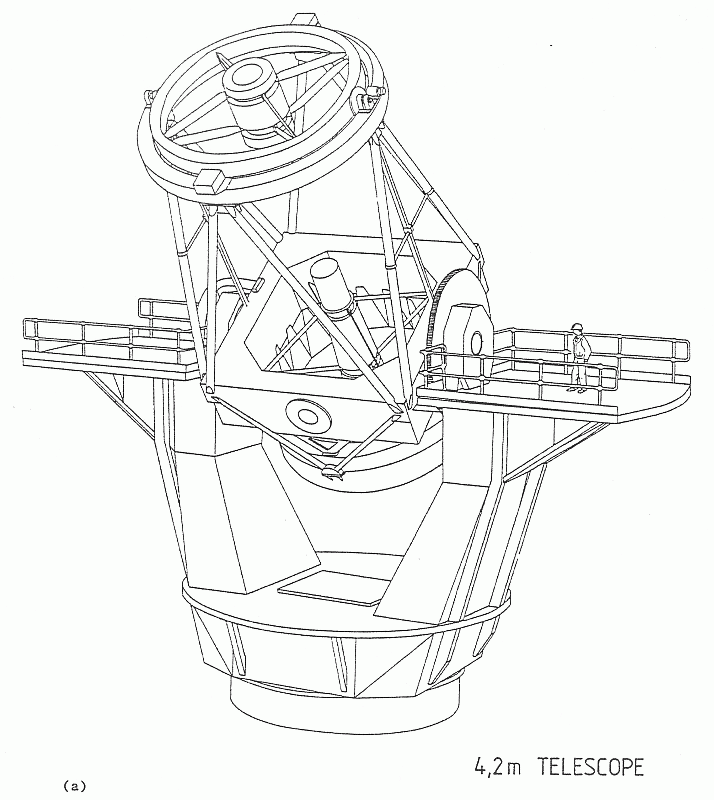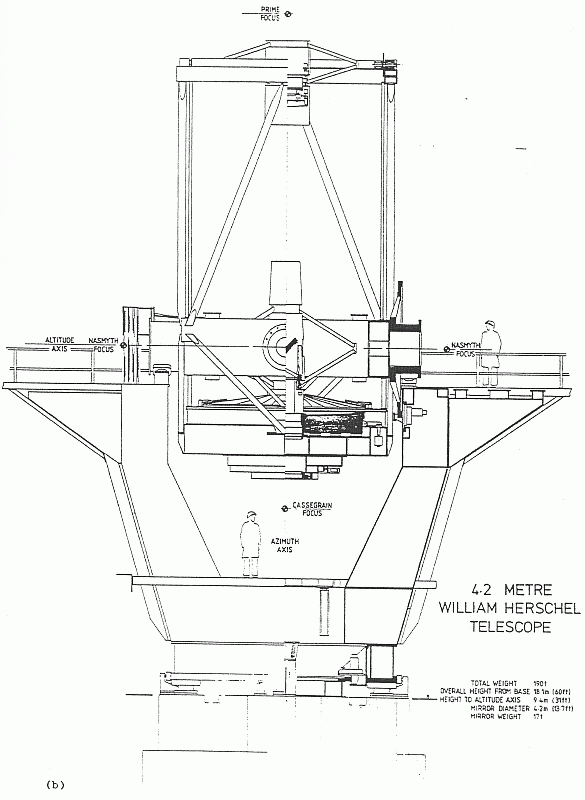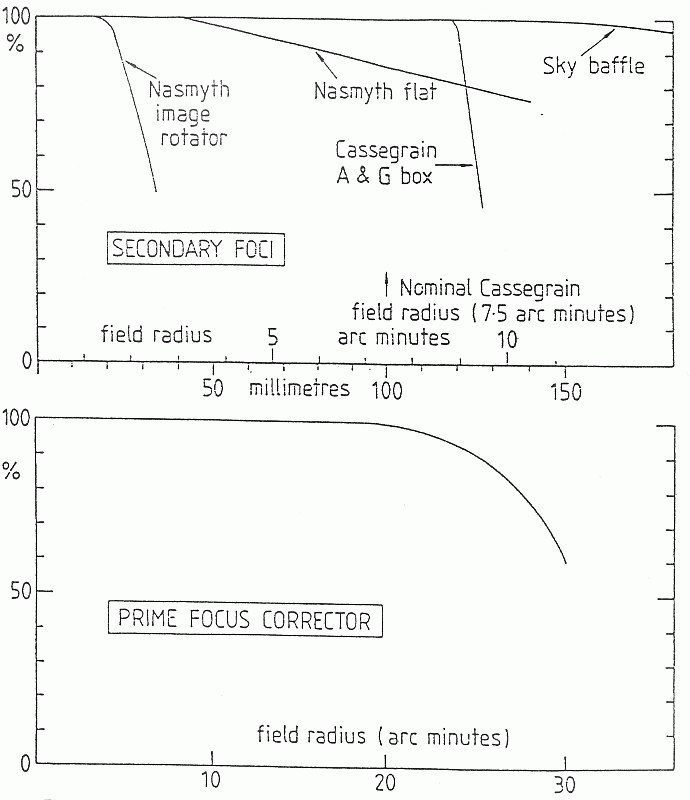 ).
).




The WHT is controlled by a MicroVAX 4000 computer interfaced through CAMAC. The mechanisms currently under computer control are altitude, azimuth and instrument rotator drives, focus and dome rotation. The primary mirror cover, shutters and Nasmyth flat are controlled manually. The telescope control system may be run in a stand-alone mode from its own terminal or from the system computer, which allows access to almost all of the same commands. The user interface is divided into two mutually exclusive parts: one for typed commands, the other a ``handset'' for guiding and focussing. Both of these are controlled from the same terminal. In addition, there is a display of telescope parameters, updated once a second. The telescope may be operated from the control room or from the GHRIL enclosure. Commands can also be issued to the TCS through the D-task from the ICL interface to the Instrument Control Computer, but the handset cannot be used this way. The control system is described in detail in the ``William Herschel Telescope Users' Manual''.
For the purposes of preparation, the observer will need to consider:
positions, finding charts, guide stars, catalogue formats, the need for blind
offsetting and the restrictions imposed by the altazimuth
mount (Section  ).
).

[ TIFF ]

[ TIFF ]
Figure: Schematic views of the WHT
(a) in perspective (b) looking orthogonally to the altitude and azimuth axes

[ TIFF ]
Figure: The area of sky
accessible to the WHT. Lines of equal zenith
distance are given on a plot of declination against hour angle.
The limits corresponding to partial obscuration of the telescope
by the dome rail (Zenith distance <78 degrees) and the zenith blind
spot (Zenith distance > 0.21 degrees; see text) are shown.

[ TIFF ]
Figure: Optical layout of the WHT

Table: Summary of mirror characteristics for the WHT

Table: Optical characteristics of WHT foci

[ TIFF ]
Figure: Layout of the WHT Prime Focus Corrector and Atmospheric
Dispersion Compensator

[ TIFF ]
Figure: Spot diagrams for the f/11
Cassegrain and Nasmyth foci of the
WHT. (a) Aberrations on a flat focal surface passing though the
nominal focus on-axis. (b) Aberrations on a concave surface with radius
of curvature 2.2 m. This illustrates the image quality available at
the edge of the field for a suitably focused autoguider. (c) Aberrations
on a flat surface which is focused for a compromise over the field.

[ TIFF ]
Figure: Spot
diagrams in a single plane for the Nasmyth foci of the
WHT when used with the image derotation optics. Images for
wavelengths from 330 - 1000 nm and distances of up to 2.5 arcmin
from the axis are shown.

[ TIFF ]
Figure: Vignetting at various foci of the WHT. The curves show the
percentage transmission as a function of field radius. For
accurate photometry, they should be interpreted with caution.
The diagram refers to the area outside the constant central
obstruction (8.4%) and secondary vane obstruction (0.6%). (a) f/11 Cassegrain
and Nasmyth foci (b) prime focus.



